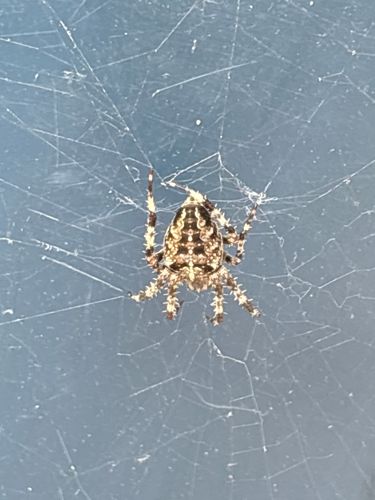Cross Orbweaver, European Garden Spider
Scientific Name: Araneus diadematus
Order & Family: Araneae, Araneidae
Size: Females 6.5-20 mm (body length), Males 5.5-13 mm (body length)

Natural Habitat
Gardens, woodlands, fields, and human-made structures, often building webs in open, sunny areas between plants or structures.
Diet & Feeding
Mainly flies, mosquitoes, moths, and other small insects caught in their orb webs.
Behavior Patterns
Known for spinning large, intricate orb webs to catch prey. They typically rebuild their webs daily, often at dawn, consuming the old web. They spend most of their time in the center of the web or waiting nearby in a retreat, connected by a signal line. Females are significantly larger than males.
Risks & Benefits
Risks: Bites are rare and usually cause only mild, localized pain, swelling, and redness, comparable to a bee sting. They are not considered dangerous to humans. Benefits: They are beneficial predators, controlling populations of various insect pests in gardens and agricultural settings.
Identified on: 9/18/2025